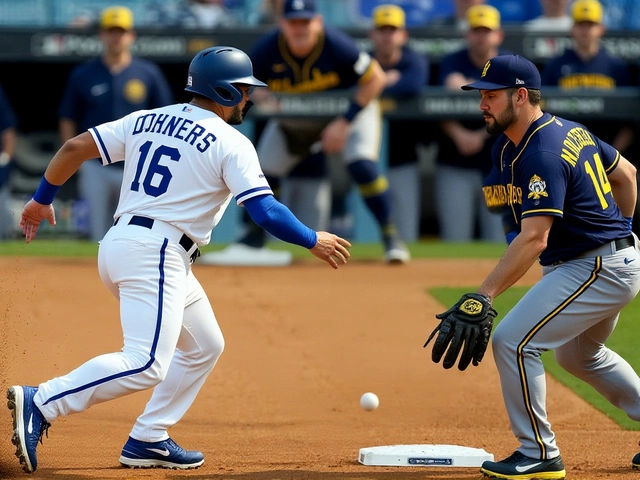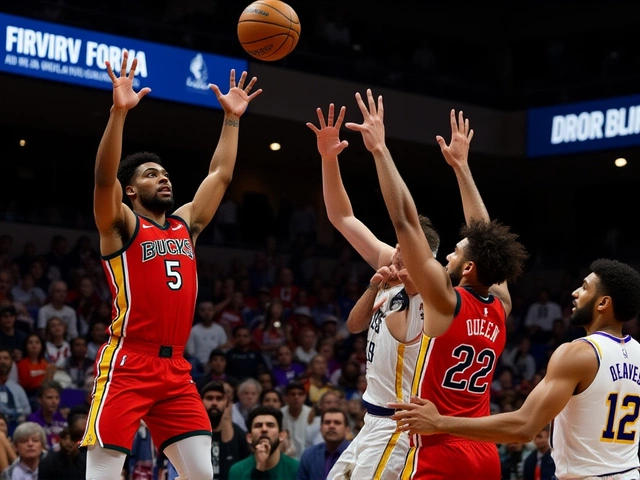Costa Rica and Honduras eliminated from 2026 World Cup after 0-0 draw
When the final whistle blew at Estadio Nacional in San José on November 18, 2025, the silence wasn’t just from the crowd—it was the sound of two footballing nations realizing their World Cup dreams were over. Costa Rica and Honduras played out a tense, goalless draw in their final CONCACAF third-round World Cup qualifying matchSan José, eliminating both from direct qualification for the 2026 FIFA World CupCanada, Mexico, and the United States. It wasn’t just a stalemate on the pitch—it was a collapse in ambition, a failure to seize opportunity, and the end of an era for two of CONCACAF’s most storied teams.
The Final Nail in the Coffin
Entering the match, Honduras sat atop Group A with 8 points, needing just a win to lock up direct qualification, provided Haiti didn’t win. Costa Rica, with just 6 points, needed a miracle: a victory plus a Haiti loss. Instead, Haiti stunned everyone by scoring in their own match against Nicaragua—a result that sealed both Central American rivals’ fates. The 0-0 draw wasn’t a fluke; it was the inevitable conclusion of months of missed chances, defensive panic, and psychological fatigue.
Keylor Navas, 38, the veteran goalkeeper who’s been Costa Rica’s backbone since 2010, made a breathtaking stop in the 46th minute to deny a close-range header from Honduras’s Yustin Arboleda. It was the kind of save that defined his career—except this time, it wasn’t enough. The same man who kept Costa Rica alive in the 2014 and 2018 World Cups couldn’t will his team forward now. Meanwhile, Honduras’s attack, once lethal under coach Luis Fernando Suárez, looked disjointed, their best player, Luis Palma (5 goals in 2025), isolated and starved of service.
How It All Fell Apart
The collapse didn’t start on November 18. It began on November 13, when Nicaragua—a team that hadn’t beaten Honduras since 1965—pulled off the unthinkable, winning 2-0 in Tegucigalpa. Goals from Jamie Moreno (his 15th international strike) and Rael Esti shattered Honduras’s 8-match unbeaten run and six straight clean sheets. That loss wasn’t just a defeat—it was a cultural rupture. For a nation that once produced World Cup regulars like Carlos Pavón and Reinaldo Ríos, being outplayed by Nicaragua felt like a betrayal of legacy.
Costa Rica’s problems ran deeper. They’d gone winless in their last four qualifiers, drawing three and losing one. Their midfield, once a machine under coach Marco Antonio Figueroa, looked slow, predictable. Their best player, Christian Bolaños, was sidelined with injury. The team’s identity—quick transitions, intelligent pressing—had vanished. They weren’t just losing; they were forgetting how to play.
Haiti’s Historic Rise
While Honduras and Costa Rica floundered, Haiti quietly made history. Their 1-0 win over Costa Rica on Matchday 5 was their first-ever victory against them in World Cup qualifying. That result, combined with their 2-1 win over Nicaragua and a 0-0 draw with Jamaica, gave them 11 points—enough to top the group. For a country that hasn’t qualified for a World Cup since 1974, this was monumental. Their defense, anchored by goalkeeper Préjuce Nakoulma, kept clean sheets in three of their last four matches. They didn’t dazzle, but they didn’t break.
“This isn’t luck,” said Haitian captain Jonathan Pitroipa after the final whistle. “This is years of work. We didn’t have money. We didn’t have stadiums. But we had pride.”
What This Means for CONCACAF
The elimination of two traditional powerhouses sends shockwaves through the region. For the first time since 2006, neither Costa Rica nor Honduras will be in the World Cup. The gap between the top three (USA, Mexico, Canada) and the rest is widening. Panama, Jamaica, and even Trinidad and Tobago now look more competitive than ever. Meanwhile, Nicaragua’s rise—finishing fourth despite only 4 points—signals a new, unpredictable era.
The 2026 World Cup will feature 48 teams, and CONCACAF gets six direct spots plus one playoff. That means Honduras and Costa Rica still have a sliver of hope through the inter-confederation playoffs. But the odds are long. Both teams lack momentum, cohesion, and a clear plan. The players who carried them in 2014 and 2018 are gone. The next generation isn’t ready.
What’s Next?
For Honduras, coach Suárez is expected to resign. The federation has already begun scouting younger talent, with several U-20 players from the 2025 CONCACAF U-20 Championship being fast-tracked. Costa Rica’s federation is in crisis mode—internal reviews are underway, and there’s growing pressure to replace coach Figueroa with someone like Óscar Ramírez, who led them to the 2018 World Cup.
Meanwhile, Haiti prepares for their first World Cup in 52 years. Their players will be treated like national heroes. Their youth academies will get funding. Their stadiums will be renovated. For once, the Caribbean isn’t just watching—it’s playing.
Final Group A Standings (2026 World Cup Qualifying)
- Haiti — 11 pts (3W-2D-1L, +3 GD)
- Honduras — 9 pts (2W-3D-1L, +3 GD)
- Costa Rica — 7 pts (1W-4D-1L, +2 GD)
- Nicaragua — 4 pts (1W-1D-4L, -8 GD)
Frequently Asked Questions
Why didn’t Costa Rica and Honduras qualify despite having strong histories?
Both teams suffered from generational turnover and poor tactical adaptation. Costa Rica’s midfield lost its rhythm after key players retired, while Honduras’s attack became predictable after Luis Palma was isolated. Neither adapted to the rise of physical, compact teams like Haiti and Nicaragua. Their 2025 campaign was marked by inconsistency, missed chances, and defensive lapses—problems that had been masked by past success.
How did Haiti qualify for the first time since 1974?
Haiti qualified through disciplined defense, smart counterattacks, and historic results. They kept clean sheets against Costa Rica and Nicaragua, drew with Jamaica, and won their two toughest matches. Their captain, Jonathan Pitroipa, led by example, and goalkeeper Préjuce Nakoulma was outstanding. This wasn’t a flash in the pan—it was the culmination of a decade-long youth development push funded by diaspora investment and FIFA grants.
What impact did Nicaragua’s win over Honduras have?
Nicaragua’s 2-0 win on November 13, 2025, was seismic. It ended Honduras’s 8-match unbeaten streak and six straight clean sheets. Jaime Moreno’s 15th international goal made him Nicaragua’s second-highest all-time scorer. More importantly, it shattered Honduras’s psychological edge—something they’d held over Nicaragua for 60 years. That loss triggered a collapse in confidence that carried into the final match.
Will Costa Rica and Honduras still have a chance to reach the 2026 World Cup?
Yes, but it’s unlikely. The top six teams in CONCACAF qualify directly. The seventh-place team enters a playoff against the fifth-place team from South America. Costa Rica and Honduras are currently 3rd and 2nd in the group, but only the top six get direct spots. To qualify now, they’d need to finish seventh, then win a two-legged playoff—a tall order given their recent form and lack of squad depth.
Who are the new rising teams in CONCACAF?
Haiti is now a legitimate contender, and Nicaragua showed they can compete with giants. Jamaica’s young midfielders, like Kevon Lambert and Jahmari Clarke, are emerging as stars. Panama’s 2025 campaign was strong, and even Trinidad and Tobago, with their 2024 U-20 success, are building toward a resurgence. The old hierarchy is crumbling—and the new era is already here.
What does this mean for fans of Costa Rica and Honduras?
For many, it’s the end of an era. Generations grew up watching Costa Rica and Honduras in every World Cup since 1990. Now, they’ll have to watch from home. But it’s also a chance for renewal. The pain of this failure could spark a new wave of investment in grassroots football, better coaching, and smarter recruitment. The alternative? More years of disappointment.




